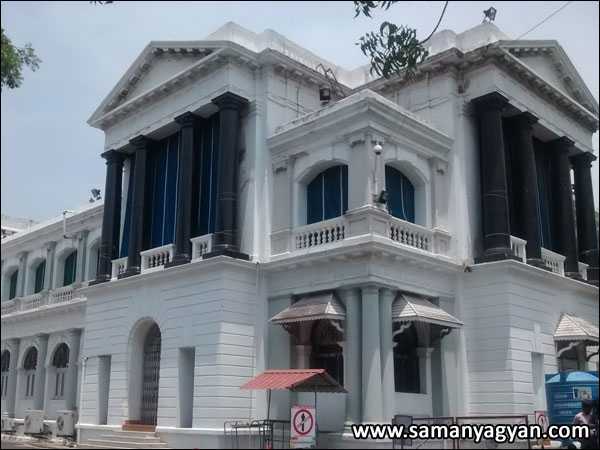Fort St George Quick Facts
| Place | Chennai, Tamil Nadu (India) |
| Built in | 1638 AD to 1644 AD |
| Built by | British East India Company |
| Type | Fort |
| Architectural style | European style |
Fort St George Overview
The state of Tamil Nadu, located in the southern part of the Indian subcontinent, is the most prominent state in India. St George's Fort located in Chennai, the capital of Tamil Nadu, is the best example of India's colonialism, as this fort was built by the British government. This fort represents the European architectural style.
Fort St George History
The East India Company came to India for the purpose of trade around 1600 AD, which started its trade licensed from the Government of Surat. When he started trading, he felt the need for a port near the Strait of Malacca (Indonesia), so he decided to buy a piece of land on the east coast of India, which he was successful in and he took the area as a native. It was renamed as Chenniyarpattinam (Channapatnam).
The construction of St. George Fort was started by the East India Company in the year 1638 on this piece of land, which was completed by the year 1644 AD. A plan called George Town was started from this fort itself, according to which the plan of building a city by eliminating the villages of that area was put into action, as a result of which the city of Madras was formed.
This Fort also served to increase the influence of the British government on Karnataka, ending the rule of the kings of Arcot and Srirangapatna. The fort survived several attacks until the 18th century, which was taken over by the French in 1746, who later ceded it to Great Britain under the Treaty of Aix la Chapelle. Since 1947, this fort is under the control of the Government of India.
Fort St George Interesting Facts
- The construction of this fort took about 6 years, its construction was started in the year 1638 AD, which was completed and completed by the year 1644 AD. This fort is also known as "White Town".
- The construction of this world famous fort was completed on 23 April 1644, which at that time cost about 3000 pounds to complete.
- This Fort was made very strong from the point of view of security, the main walls of this fort were about 6 meters (20 ft) high which was very difficult for any enemy to cross.
- It briefly passed into French possession from 1746 to 1749, but was restored to Great Britain under the Treaty of Aix-la-Chapelle, which ended the War of the Austrian Succession.
- In the year 1665, the French East India Company was formed in France, after which the East India Company of the British had to strengthen the fort to protect itself from them, due to which the fort was gradually converted into a military cantonment. It was felt
- This Historic fort had withstood many attacks till the 18th century, but in the year 1746, the fort was taken over by the French, which they ruled till 1749 and in 1748 by a treaty of Aix-la-Chapelle. Under it was handed back to Great Britain.
- The most prominent of the inner structure of this fort is "St. Mary's Church", which is the oldest Anglican church in India till date. This church was built between 1678 AD to 1680 AD on the orders of the then agent of Madras Strensham Master.
- The most amazing and grand structure of this fort is its museum which is also known as "Fort Museum", it was constructed in the year 1795 AD, in which many items of British rule and things of the first bank opened in Madras. has been maintained. A novel was written by Nobel laureate "Orhan Pamuk" over this museum.
- Other prominent structures of this fort include Wellesley House, which includes a Dawat Khana (Banquet Hall), a museum of Tipu Sultan's doctrine and a 14.5-foot-tall statue.
- On 15 August 1947, on the occasion of India's independence, the first national flag of India was hoisted on this fort, which is still flying safely over this fort.
- The Tricolor of India that was hoisted on this fort was designed by Pingali Venkayya, which was adopted as the national flag of India during the meeting of the Constituent Assembly held on 22 July 1947.
- A 10-storey high building named Namakkal Kavingar Maligai Campus is located within this fort, which is presently the power center of the Tamil Nadu State Secretariat. The maintenance of this building was spent between 2012 and 2014 at a cost of about 28 crores.
- The main part of this fort is used as the offices of the Chief Minister of Tamil Nadu and other ministers.

